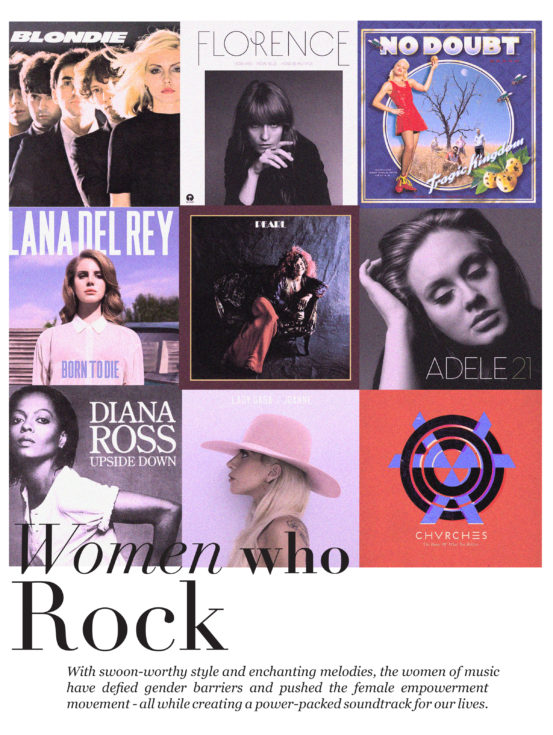
The story of female artists in the music industry is one filled with captivated audiences and legions of inspired fans. Women have undisputedly made an impact across every musical genre, and some argue that certain females have defined musical eras. Try thinking about the 80’s and not associating it with one of Madonna’s anthems or iconic fashion statements. Female artists have made their mark by giving a voice to generations that have felt disconnected and unrepresented in society. With women regularly headlining the world’s most coveted musical stages, it’s hard to believe that women are still battling with gender equality issues within the workplace, in education, and even at home.
Known to push boundaries, female artists have never been shy to question stereotypes and have done so while making (and breaking) records in the music world. From Diana Ross and the Supremes becoming the firt U.S. group in 1965 to ever have five songs in a row reach number one, to Adele being the first woman to have three top-10 singles on the Billboard’s Hot 100 simultaneously – there’s no doubting that women are musical powerhouses. However, even with Taylor Swift repeatedly sweeping the Grammy Awards and Beyonce’s sell-out stadium tours, there are still moments that make one question if the music industry overlooks the significance of women – particularly women from the past who brilliantly rocked through our stereo speakers.
Last October, a nostalgia-fueled festival took place with a star-studded line-up of rock royalty from the past. The much-anticipated Desert Trip, dubbed ‘Oldchella’, swept through Indio, California and did so without any female presence on stage. The festival featured Bob Dillon, The Who, The Rolling Stones, Paul McCartney, Neil Young, and Roger Waters; however, the sell-out crowds that attended the weekend festivities felt the void of female performances. When an LA Times journalist asked festival goers what they would change about the first-time event many noted that they hoped to see more of their favourite women vocalists take the stage in the future. Not much of a surprise, considering the festival world is familiar territory for female artists – Janis Joplin famously took the stage at Woodstock in 1969, and today’s biggest festivals, including Coachella and Glastonbury, are filled with the likes of Lana Del Ray and Adele.
Not only is the festival world paying homage to male driven music, but the art and fashion world seem to be as well. This May, the V&A is launching The Pink Floyd Exhibition: Their Mortal Remains, which celebrates the musical journey of the all-male band. Pink Floyd rose to popularity through the 60’s, a time that also saw numerous women in the spotlight. The rise in the popularity of the ‘vintage’ concert tees in the fashion world has lead to the influxof band t-shirts in almost every High Street shop. Trying to find a female rock shirt, like Blondie or Joan Jett, amidst The Rolling Stones and Guns N’ Roses stamped attire is practically impossible. The lack of representation may just be a coincidence, but what is definite is that women were dominating the airwaves and influencing a generation just as much as their male counterparts.
The music industry is filled with inspirational women making powerful statements, and are continuing to successfully front male bands. Look no further than Florence Welch of Florence and the Machine who has had the rock world entranced with her unique and hypnotizing sound since 2009, and even Gwen Stefanie who defined female punk-rock in the mid 90’s with her band No Doubt. The of-the-moment Scottish band, CHVRCHES, who excels with Lauren Mayberry on lead vocals, is yet another example of the success of a female taking the lead. Their band continues to pick up rave reviews from industry critics, and makes us wonder if there is anything more true to heroine fashion than a female fronting a male band?
Well actually, there might be. Perhaps, a woman headlining a show that has over 100 million viewers, with over 50% of those viewers being male, is what defines female empowerment. The Super Bowl half-time show, a beloved American sporting event with an all male cast, has Lady Gaga taking the stage this February. Her new album, Joanne, which debuted at number one on the Billboard charts, is the fourth number one album for the pop sensation. She is one of only five females to ever snatch a sought-after solo gig for the Super Bowl. Interestingly enough, three of the last five half-time show headliners were female – an inspiring trend that shows girl power is a force to be reckoned with.

Leave a Reply